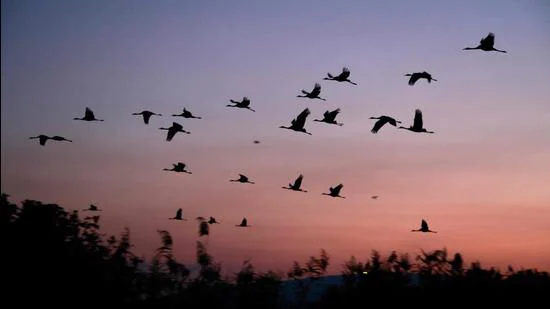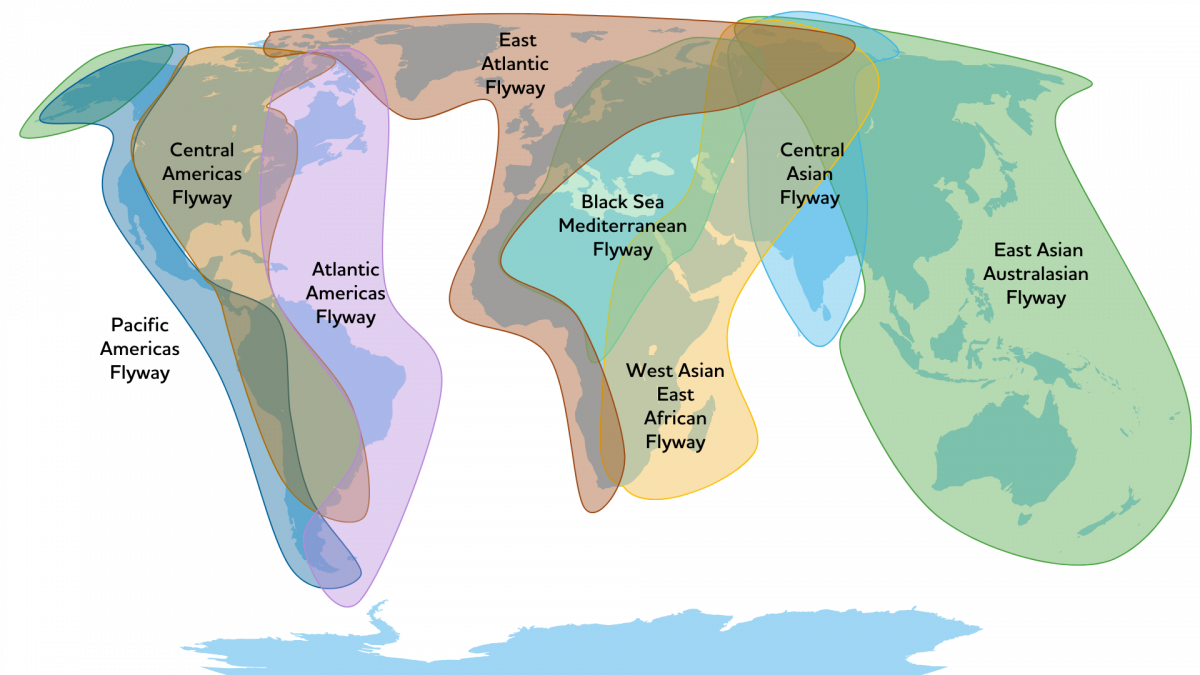





Copyright infringement not intended
Picture Courtesy: https://www.hindustantimes.com/opinion/scientifically-speaking-birds-fly-incredible-distances-we-are-now-learning-how-101634713880174.html
Context: The 14th Meeting of the Conference of the Parties to the Convention on the Conservation of Migratory Species of Wild Animals (CMS COP 14) concluded with the adoption of the Initiative for the Central Asian Flyway, led by India and supported by BirdLife International and 30 other governments.
Details
Background
|
Flyway ●A flyway is a flight path used by large numbers of birds while migrating between their breeding grounds and their overwintering quarters. ●Flyways generally span continents and often pass over oceans. ●There are nine major flyways in the world, each encompassing a variety of habitats and bird species. The Central Asian Flyway, stretching from Russia to the Maldives and supporting over 600 species of migratory birds. |
|
 |
|
Central Asian Flyway Initiative
Key Components of the Initiative
Role of Central Asian Flyway Initiative
Conservation Challenges
Collaboration and Commitment
Conclusion
Must Read Articles:
CMS COP14: https://www.iasgyan.in/daily-current-affairs/cms-cop14
|
PRACTICE QUESTION Q. Wetland degradation not only affects birds but also has cascading effects on water quality, climate regulation, and flood control. How to effectively measure and integrate these often invisible impacts into economic and policy decisions related to environmental protection? Answer Structure: ●Introduce the topic by defining what wetlands are and why they are important for humans and nature. ●Explain the causes and effects of wetland degradation on different dimensions, such as biodiversity, water quality, climate change mitigation, and flood prevention. Provide examples and data to support the arguments. ●Discuss the challenges and gaps in measuring and integrating these impacts into economic and policy decisions. Highlight the limitations of existing methods and frameworks, such as cost-benefit analysis, ecosystem services valuation, and environmental impact assessment. ●Suggest some possible solutions and recommendations to overcome these challenges and gaps. For example, adopting a holistic and interdisciplinary approach, involving stakeholders and communities, applying the precautionary principle and the polluter pays principle, and promoting wetland conservation and restoration. ●Conclude by summarizing the main points and emphasizing the need for urgent action to protect wetlands and their functions and services. |










© 2025 iasgyan. All right reserved